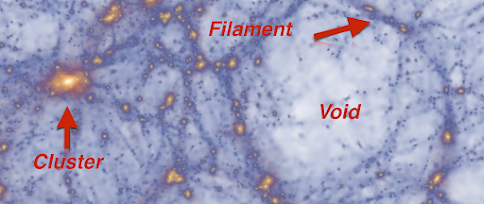Stellar Metamorphosis is a model of star formation and planet formation discovered by Jeffrey Wolynski, with similar precursors going back to Oparin, Descartes and Leibniz. The basic concept of Stellar Metamorphosis is that stars eventually lose mass and cool down to become planets. All observed planets used to be stars.
The main sequence of stars starts out with big blue white stars that cool down to become small cooler red dwarfs, which cool to become brown dwarfs, which become gas giant planets, and so on, down to neptunes and terrestrial type planets. Although the hottest brightest stars are easiest for us to observe, they are the least common star type, lasting a relatively short amount of time before they cool down to become yellow stars. Yellow stars last longer than white stars, but will cool down to become longer lasting red stars, and so on. There are far more red dwarfs than white stars, it is estimated that there are far more brown dwarfs than red dwarfs. We should expect that there are far more gas giants than brown dwarfs, far more terrestrial type planets and moons than gas giants, and so on.
The remains of terrestrial planets, ice dwarfs, moons and asteroids could last for many trillions of years. If so, we should expect that in a Universe which has been around longer than tens of billions of years, we should expect that these planets moons and their remains should be found in great abundance.
"It is nevertheless probable that there may be as many as 109 stars [within a sphere of radius 3.09 · 1016 kilometres] but many of them may be extinct and dark, and nine-tenths of them though not all dark may be not bright enough to be seen by us at their actual distances. [...] Many of our stars, perhaps a great majority of them, may be dark bodies." - Lord Kelvin
There have been estimations of non-shining stars, so-called "dark bodies", which in modern times has developed into a theory of so-called "dark matter".. It is currently estimated that a significant proportion of the mass of galaxies is some missing component yet to be observed. Many popular theories consider dark matter to be some form of exotic non-baryonic matter particle with special powers that defy the known laws of physics. A more simple explanation is, as Kelvin proposed, that these are non-luminous stars.
There is a microlensing survey from 2011 which found that there may be as many as 100,000 rogue planets or nomad planets per standard luminous star, that is, planets which are not in orbit around shining stars. A quick back of the envelope calculation shows that this amount could account for the amount of missing mass expected from dark matter, depending on how massive these rogue planets are if they are in fact out there.
Researchers Say Galaxy May Swarm with "Nomad Planets"
from Stanford University
from Stanford University
For every typical star in our galaxy, there may be up to 100,000 “nomad planets” not tied to any solar system, according to a new study by researchers at the Kavli Institute for Particle Physics and Cosmology (KIPAC), a joint institute of Stanford University and the SLAC National Accelerator Laboratory.
https://www6.slac.stanford.edu/news/2012-02-23-researchers-say-galaxy-may-swarm-nomad-planets
Rogue planets or nomad planets are often visualized as random stray planets wandering around alone through the galaxy. But if Stellar Metamorphosis is correct, this strongly implies that groups of stars that cool down to become solar systems will cool down to become planetary systems without a shining host star. For example, in our solar system, once the Sun has cooled down, unless the planets shift into orbit around a new host star, what remains for some time will be a hostless planetary system. So we may be better off thinking of these thousands of planets as often being entire planetary systems.
We can observed from comets, kuiper belt object, and globular star clusters that there is a tendency for orbits to move from a neat linear disc, to more of a spherical shell in various directions. This may be the same for these non-luminous planetary systems as they become more and more evolved. It may be the case that larger systems of planets and planetary remains could provide the supporting mass for globular clusters to develop, which are expected to have a very high percentage of "dark matter" ( = dark bodies, hidden worlds), and in this same way, dwarf elliptical galaxies could have even more hidden worlds, as they are expected to have even more "dark matter".
Conclaves:
If we imagine of progression of this type, it is not out of the question that some regions may have extremely compact with planets and planetary remains forming entire non-luminous galaxies, and beyond that, spanning vast areas forming huge spherical or elliptical conclaves ("hidden groups"). Spherical so called "cosmic voids" may be home to the highest density of hidden worlds, the biggest conclaves of them all.




No comments:
Post a Comment